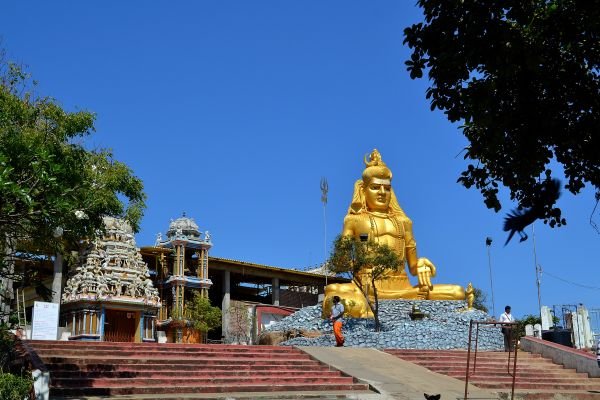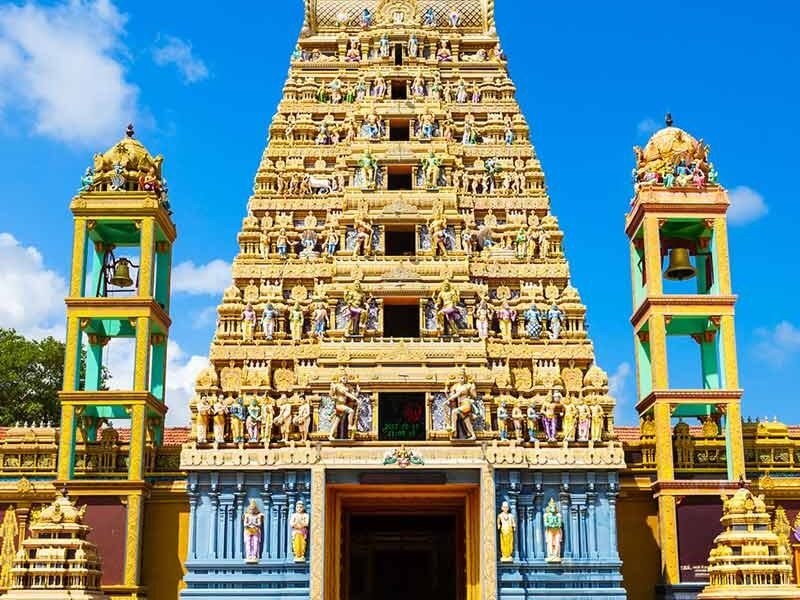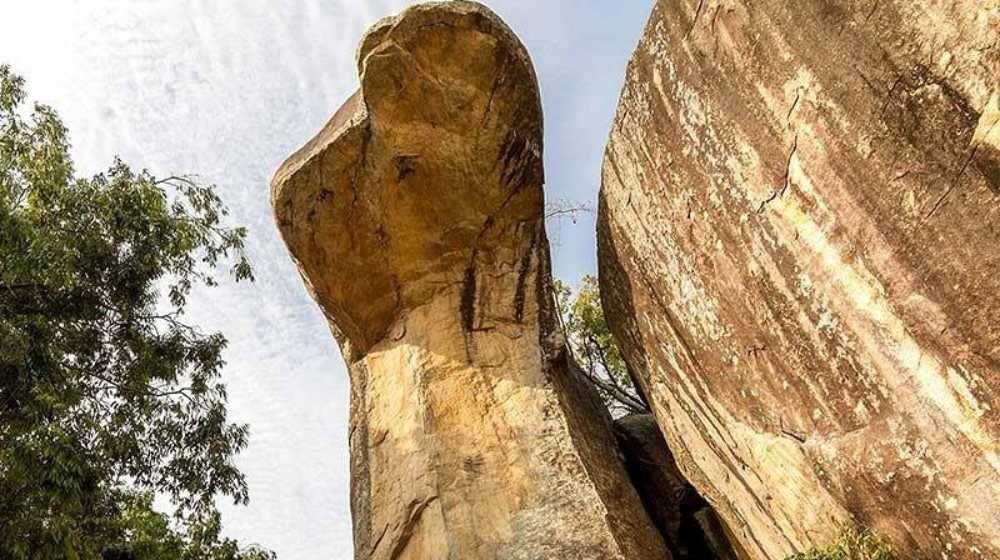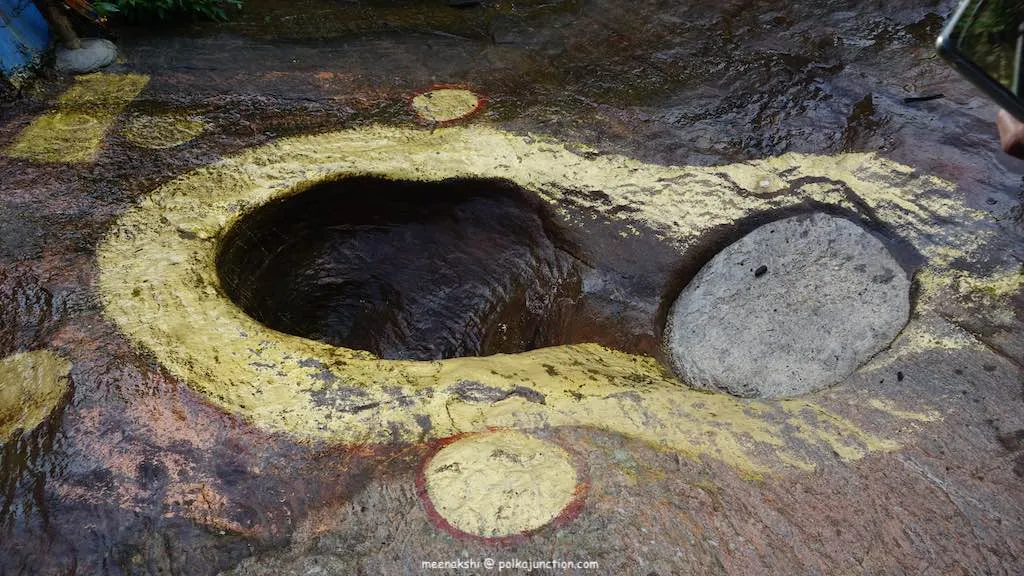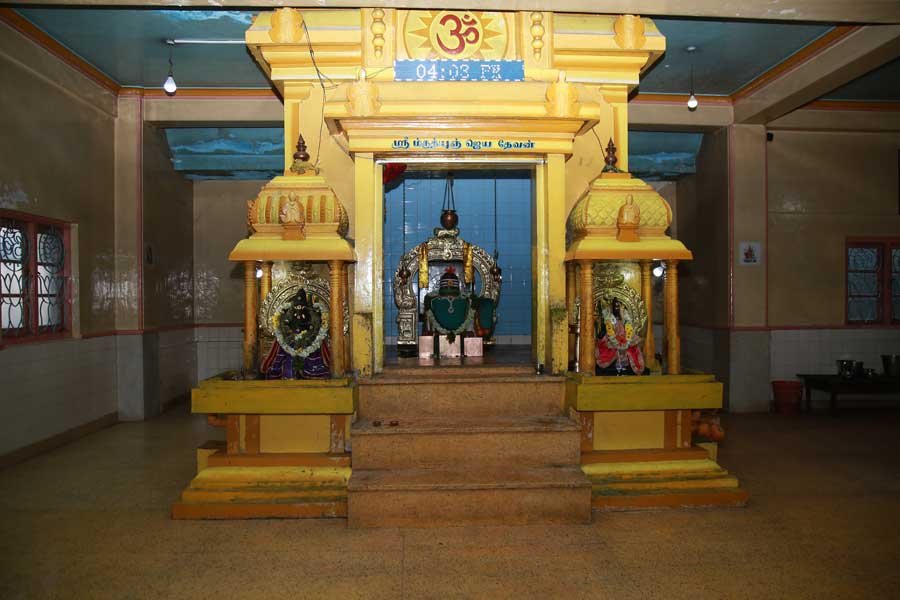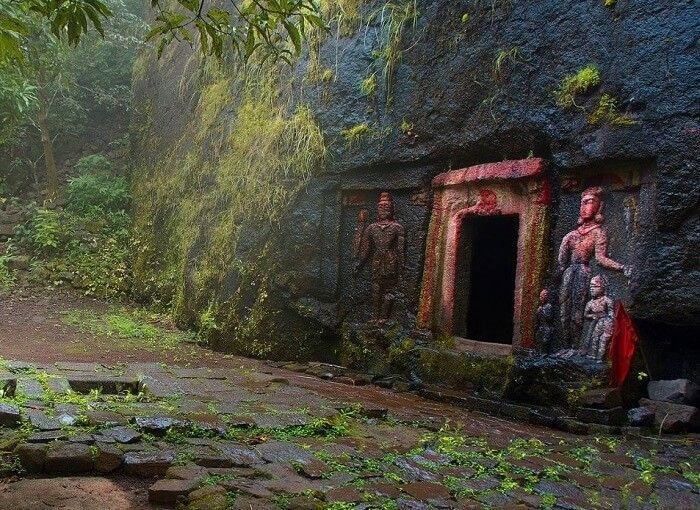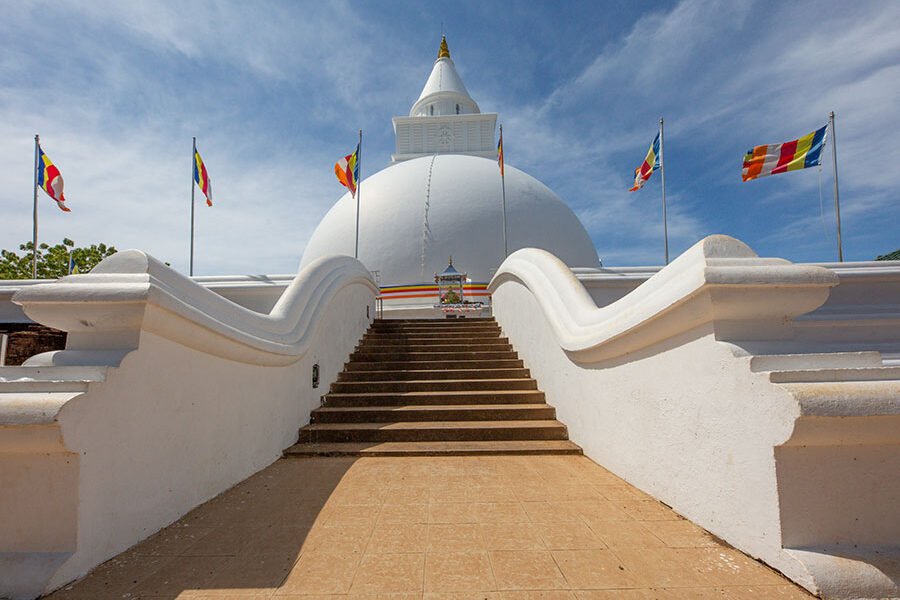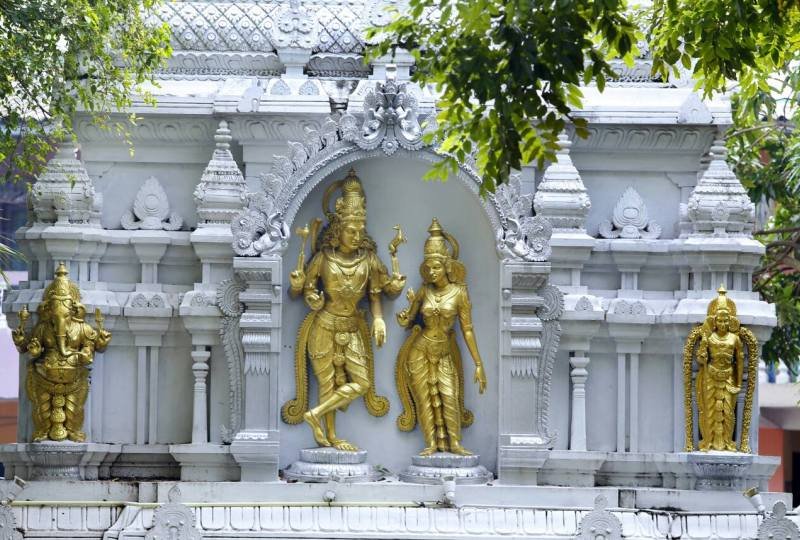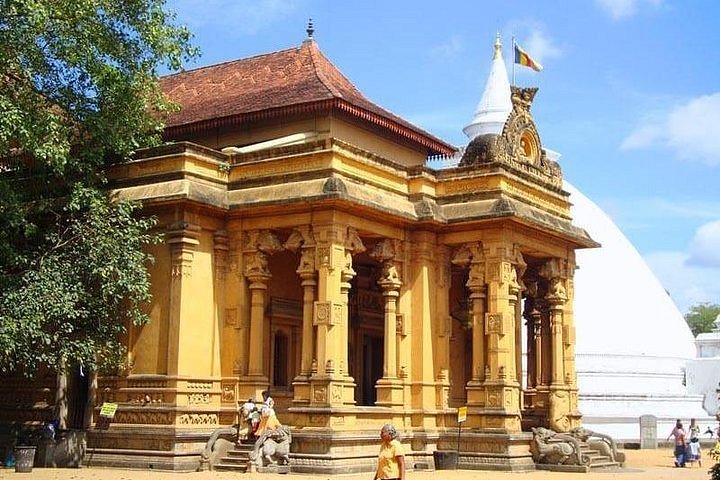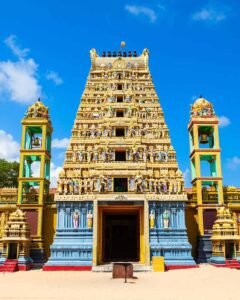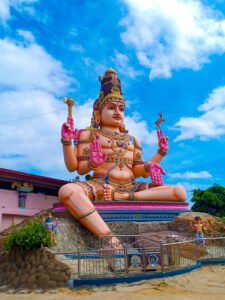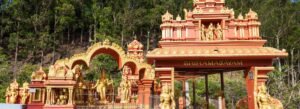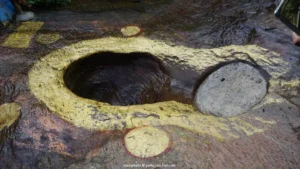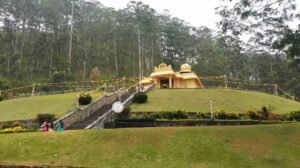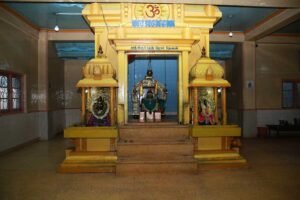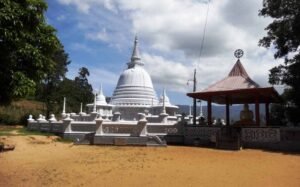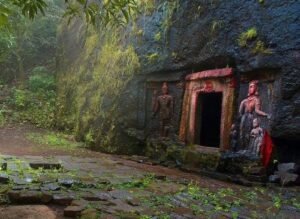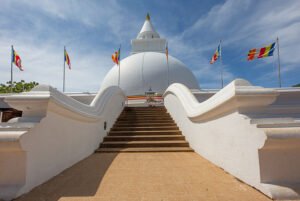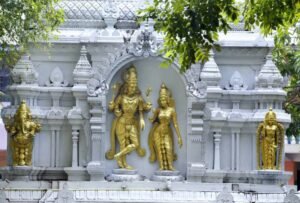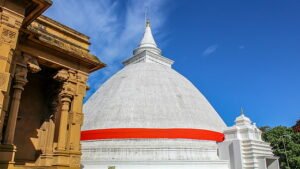(Chilaw,Anuradhapura,Trincomalee,Kandy,Nuwara Eliya,Katharagama,Colombo)
-
English
-
1
-
75
Overview
Munneswaram & Manawari Temples Chilaw
Munneswaram and Manawari Temples are two prominent Hindu temples located in the Chilaw area of Sri Lanka.
Munneswaram Temple is a historic Hindu temple complex dedicated to Lord Shiva, situated in Munneswaram village near Chilaw. It is considered one of the five ancient temples dedicated to Shiva in Sri Lanka. The temple attracts pilgrims from various parts of the country and is known for its architectural significance and religious rituals.
Manawari Temple, also known as the Manavari Kovil, is another important Hindu temple located near Chilaw. It is believed to be the first temple in a series of five temples dedicated to Lord Rama, an incarnation of the Hindu god Vishnu. According to legend, it is the place where Lord Rama installed the first Lingam (a representation of Lord Shiva) to absolve himself of the sin of Brahmahatya, the killing of Ravana, who was a Brahmin.
Both temples hold significant cultural and religious importance for Hindus in Sri Lanka and attract devotees and visitors throughout the year.
Thirukoneswaram Temple
Thirukoneswaram Temple, also known as the Koneswaram Kovil or the Temple of the Thousand Pillars, is a historic Hindu temple located in Trincomalee, Sri Lanka. This temple is dedicated to Lord Shiva and is revered as one of the Pancha Ishwarams (five abodes of Shiva) by Shaivites.
The temple’s history dates back over two millennia, with mentions in ancient Tamil literature and inscriptions. It is believed to have been built and expanded by various rulers throughout history, including the Chola, Pandyan, and Jaffna Kingdoms. Thirukoneswaram Temple stands as a testament to the rich cultural and religious heritage of the region.
Perched atop Swami Rock overlooking the Indian Ocean, the temple offers breathtaking views and holds immense spiritual significance for devotees and pilgrims. The architectural grandeur, along with its religious and historical importance, makes Thirukoneswaram Temple a significant landmark in Sri Lanka’s cultural landscape.
Sigiriya Cobra Hood
The Sigiriya Cobra Hood, also known as the Cobra Hood Cave, is a remarkable rock formation located near the ancient city of Sigiriya in Sri Lanka. This natural wonder is renowned for its striking resemblance to the raised hood of a cobra, hence its name.
Situated amidst the lush greenery and rugged terrain of the Sigiriya area, the Cobra Hood draws visitors and nature enthusiasts from around the world. Its unique shape and geological formation make it a fascinating sight to behold, offering photographers and adventurers a captivating subject.
The Sigiriya Cobra Hood is not only a natural marvel but also adds to the mystique and allure of the Sigiriya region, which is already renowned for its UNESCO World Heritage Site, the Sigiriya Rock Fortress.
Sita Amman Temple Nuwara Eliya
The Sita Amman Temple, located in Nuwara Eliya, Sri Lanka, is a sacred Hindu temple dedicated to Sita, the consort of Lord Rama in the Hindu epic Ramayana. According to legend, this temple is situated in the location where Sita was held captive by the demon king Ravana.
The temple is nestled amidst the picturesque hills of Nuwara Eliya, surrounded by lush greenery and serene landscapes. It is not only a place of worship but also a significant pilgrimage site for devotees of Lord Rama and Sita.
Visitors to the Sita Amman Temple can explore its beautiful architecture, tranquil surroundings, and learn about the rich mythology associated with the Ramayana. The temple serves as a reminder of the enduring cultural and religious heritage of Sri Lanka and its connections to ancient Hindu traditions.
Ahoka Vatika Nuwara Eliya
The Ashoka Vatika, situated in Nuwara Eliya, Sri Lanka, holds significant historical and mythological importance. According to Hindu mythology, this garden is believed to be the place where Sita, the consort of Lord Rama, was held captive by the demon king Ravana in the epic Ramayana.
The Ashoka Vatika is characterized by its lush greenery, serene atmosphere, and captivating natural beauty. It is a popular pilgrimage site for devotees of Lord Rama and Sita, as well as for tourists interested in exploring the rich cultural and religious heritage of Sri Lanka.
Visitors to the Ashoka Vatika can immerse themselves in the legends and stories associated with the Ramayana while enjoying the tranquil surroundings and scenic views offered by this historic site in Nuwara Eliya.
Shri Bhakta Hanuman Temple Ramboda
The Shri Bhakta Hanuman Temple in Ramboda, Sri Lanka, is a revered Hindu temple dedicated to Lord Hanuman, a central figure in the Hindu epic Ramayana. This temple holds special significance as it is believed to be located near the site where Lord Hanuman first met Lord Rama’s army while searching for Sita, who was abducted by the demon king Ravana.
Situated amidst the picturesque hills of Ramboda, the temple attracts devotees and tourists alike who come to pay homage to Lord Hanuman and seek his blessings. The temple complex features stunning architecture, colorful murals depicting scenes from the Ramayana, and serene surroundings that offer a tranquil setting for prayer and meditation.
The Shri Bhakta Hanuman Temple serves as a spiritual sanctuary and a reminder of the enduring devotion to Lord Hanuman and the timeless teachings of the Ramayana in Sri Lanka’s cultural and religious landscape.
Gayathri Peedam Nuwara Eliya
Gayathri Peedam, located in Nuwara Eliya, Sri Lanka, is a revered Hindu temple dedicated to Goddess Gayatri, an embodiment of the divine mother and the personification of the Gayatri Mantra, a sacred Vedic hymn.
The temple complex is situated amidst the scenic beauty of Nuwara Eliya, surrounded by lush greenery and serene landscapes. It serves as a significant pilgrimage site for devotees of Goddess Gayatri, who come to offer prayers and seek her blessings for spiritual growth, knowledge, and wisdom.
The Gayathri Peedam is known for its tranquil atmosphere, intricate architecture, and cultural significance. It attracts visitors from various parts of Sri Lanka and beyond, drawn by the spiritual aura and the opportunity for reflection and worship in this sacred space.
Divurumpola Temple (Agni Pooja)
Divurumpola Temple, located near Nuwara Eliya in Sri Lanka, is a revered Buddhist temple known for its association with the ancient tradition of Agni Pooja, or the “Fire Pooja.” This temple holds significant religious and cultural importance as it is believed to be the place where Sita, the consort of Lord Rama, underwent the trial by fire (Agni Pariksha) to prove her purity and innocence after being rescued from the demon king Ravana in the Hindu epic Ramayana.
The Divurumpola Temple attracts pilgrims and visitors from various parts of Sri Lanka and beyond, who come to pay homage to Sita and seek blessings for marital harmony, prosperity, and justice. The temple complex features traditional Buddhist architecture, serene surroundings, and sacred rituals that continue to uphold the ancient traditions associated with Sita’s story.
The Agni Pooja ceremony conducted at Divurumpola Temple serves as a poignant reminder of the enduring legacy of the Ramayana and the timeless values of righteousness and justice embedded within its narrative.
Ravana Water Fall
The Ravana Falls, located near Ella in Sri Lanka, is a majestic waterfall surrounded by lush greenery and stunning natural beauty. It is named after the legendary demon king Ravana from the Hindu epic Ramayana, who is believed to have ruled Lanka, the present-day Sri Lanka.
Ravana Falls is one of the most popular tourist attractions in Sri Lanka, drawing visitors with its breathtaking cascade and picturesque surroundings. The waterfall plunges from a height of approximately 25 meters (82 feet) and creates a mesmerizing sight as it tumbles down into a pool below.
According to local folklore, Ravana Falls is said to be the place where Ravana, in his flying chariot, abducted Sita, the consort of Lord Rama, and carried her to his kingdom. The waterfall’s association with this legendary tale adds to its allure and significance, attracting not only nature enthusiasts but also those interested in Sri Lanka’s rich cultural heritage and mythology.
Ravana Caves
The Ravana Caves, situated in the Ella region of Sri Lanka, are a series of natural caves with historical and mythological significance. Named after the legendary demon king Ravana from the Hindu epic Ramayana, these caves are believed to have been used by Ravana during his reign.
The Ravana Caves are carved into the side of a cliff face, offering visitors a glimpse into the ancient history and culture of Sri Lanka. According to local folklore, these caves served as a hideout for Ravana and his followers and were also believed to be part of a complex network of tunnels connecting various parts of the island.
Today, the Ravana Caves attract tourists and history enthusiasts who come to explore the mysterious caverns and learn about their association with the Ramayana legend. The caves offer stunning views of the surrounding landscape, making them a popular destination for hikers and nature lovers as well.
Kataragama Temple
The Kataragama Temple, located in the southeastern region of Sri Lanka, is one of the most revered religious sites in the country. Dedicated to Lord Kataragama, a Hindu deity also revered by Buddhists and some indigenous communities, the temple complex is steeped in religious and cultural significance.
Devotees from various faiths flock to the Kataragama Temple to pay homage to Lord Kataragama and seek blessings for protection, prosperity, and spiritual fulfillment. The temple is renowned for its vibrant festivals and rituals, which attract pilgrims and visitors throughout the year.
The Kataragama Temple stands as a symbol of religious harmony and unity, reflecting the multicultural fabric of Sri Lankan society. Its serene surroundings and rich spiritual atmosphere make it a must-visit destination for those seeking a deeper understanding of the island’s diverse religious traditions and cultural heritage.
Panchamuga Anjaneyar Temple Colombo
The Panchamuga Anjaneyar Temple, located in Colombo, Sri Lanka, is a revered Hindu temple dedicated to Lord Hanuman, known as Anjaneyar. The temple is renowned for its unique feature of depicting Lord Hanuman with five faces, symbolizing various divine qualities and virtues.
Devotees from Sri Lanka and around the world visit the Panchamuga Anjaneyar Temple to pay homage to Lord Hanuman and seek his blessings for protection, courage, and strength. The temple complex features intricate architecture, colorful decorations, and serene surroundings conducive to prayer and meditation.
As one of the prominent Hindu temples in Colombo, the Panchamuga Anjaneyar Temple serves as a spiritual sanctuary and a center for cultural and religious activities. It stands as a testament to the enduring devotion of the Hindu community in Sri Lanka and the profound significance of Lord Hanuman in Hindu mythology.
The Panchamuga Anjaneyar Temple, located in Colombo, Sri Lanka, is a revered Hindu temple dedicated to Lord Hanuman, known as Anjaneyar. The temple is renowned for its unique feature of depicting Lord Hanuman with five faces, symbolizing various divine qualities and virtues.
Devotees from Sri Lanka and around the world visit the Panchamuga Anjaneyar Temple to pay homage to Lord Hanuman and seek his blessings for protection, courage, and strength. The temple complex features intricate architecture, colorful decorations, and serene surroundings conducive to prayer and meditation.
As one of the prominent Hindu temples in Colombo, the Panchamuga Anjaneyar Temple serves as a spiritual sanctuary and a center for cultural and religious activities. It stands as a testament to the enduring devotion of the Hindu community in Sri Lanka and the profound significance of Lord Hanuman in Hindu mythology.
Kelaniya Buddhist Temple Sri Lanka
The Kelaniya Raja Maha Vihara, commonly known as the Kelaniya Temple, is a revered Buddhist temple located in Kelaniya, Sri Lanka. Situated on the banks of the Kelani River near Colombo, this temple holds immense religious and historical significance in Sri Lanka.
According to Buddhist tradition, the Kelaniya Temple dates back over 2,500 years to the time of Lord Buddha’s third visit to Sri Lanka. It is believed that Lord Buddha visited this site and preached a discourse, marking it as a sacred place of worship.
The temple complex features stunning architecture, including intricate carvings, colorful paintings, and elaborate statues, all of which showcase the rich artistic heritage of Sri Lankan Buddhism. The main stupa and surrounding structures are adorned with vibrant decorations and ornate designs, creating a serene and spiritual atmosphere.
The Kelaniya Temple is not only a place of religious devotion but also a center for cultural and educational activities. It hosts numerous religious ceremonies, festivals, and events throughout the year, attracting devotees, pilgrims, and tourists from all over the world.
As one of the most revered Buddhist temples in Sri Lanka, the Kelaniya Temple stands as a symbol of the country’s deep-rooted Buddhist heritage and the enduring influence of Buddhism on its culture and society.


